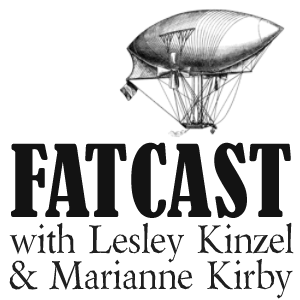Reading List: Photography (Fatography?) as Cure for Happiness
By Lesley | January 23, 2009
Yesterday, Salon published an interview with Carol Lay, author of the so-called “diet-book graphic memoir” The Big Skinny: How I Changed My Fattitude. Self-consciously clever wordplay aside, it is evidently less an illustrated personal story and more like a weight loss book with drawings. But I’m less interested in talking about the book, which I haven’t read, than I am in talking about this snippet from Lay’s interview:
When did you decide you needed to change your eating habits?
I saw a photograph of myself, looking apparently happy. But I saw that, “Wow, I’m overweight, and I’m tired of doing this to myself.” I make the suggestion, “Get yourself photographed.” Cameras are much better tools than mirrors. I’ve got my mirror trained to show me exactly what I want. The camera is out of my control.
As is my way, I’m going to preface my response to this with a personal anecdote.
When I was about fourteen, I went on Jenny Craig for the first time, after Weight Watchers and nutritionist-mandated menus had failed me in my primary childhood dream of being not-fat. This was in 1991. These days, I imagine commercial diet centers are all digital, but at the time we only had old-fashioned film, specifically polaroids, for instantly-ready pictures. My Jenny Craig “counselor” took a photograph of me on my first paid visit to their center, with a new Polaroid camera and an eye-blasting flash. In this picture, I am standing slightly off center, my back to the institutional grey wall behind me, like a suspect in a line-up. On my upper half I am wearing a long-sleeved loose-fitting shirt screenprinted with random French words, and festooned with sequined flourishes, made by a clothing company I particularly fancied at the time called Ultra Pink. On my lower half I am clad in purple knit stirrup pants. My hair is shoulder-length and its rarely-seen natural blonde shade. My face is attempting a halfhearted smile but wasn’t quite there when the shutter snapped. I am wearing a size 14, and I weigh 167 pounds exactly, which is shortly to be recorded as the beginning point on my weight-loss line chart.
This polaroid was to be my “before” picture. The counselor took it with an impressive measure of enthusiasm, with an absolute wide-eyed assurance that someday soon I would look at this picture and shake my head and say “I cannot believe I ever looked like that!” because I would look so very, very different. This polaroid was paper-clipped to my file at Jenny Craig, and every time I went in, for my weekly weigh-in and “counseling” session, I would see it there. Clipped to my file. Like a piece of my soul.
Like Jenny Craig had stolen a piece of my soul.
It bothered me. It bothered me quite a lot but I could not, at that time and that age, articulate why. I hated that they had that picture of me. As time went by and the once readily-dropping line on my weight loss graph stopped dropping and extended itself out straight and flat like an endless plain, I realized that no, Jenny Craig would not save me from my fat any better than anything else I’d tried would. And that picture made me angrier and angrier. Every time I saw it I felt vulnerable, literally exposed. I wanted it back. I fantasized about breaking in to their strip-mall storefront late at night, just to pull my own file and take that fucking picture back.
Later, I would realize this was me fighting. Or trying to fight, rather, though the real fighting would not begin for another five years or so.
In the lives and minds of most people in the US, I would argue that there is an almost inextricable link between any photograph of a fat body – no matter the context – and that archetypal “before” picture. Lay’s story of having her mind changed by a photograph of herself is hardly unique; we’ve all heard it before, from friends and strangers alike, of people who were sailing merrily through life, totally unaware of how unhappy they’re supposed to be because of how they look. Then, suddenly, one day they see an unflattering photograph of their body and: gasp, THAT is how I really look! I have to DO something!
Despite Lay’s assertion to the contrary (”The camera is out of my control”), photographs still have to answer to the eye of the beholder. Pictures that I find unflattering others do not, and vice versa. This is how it goes. Because so many of the images we see on a daily basis are positively saturated by perfect-seeming faces and bodies (both photoshopped and otherwise), the expectation is that everyone can and should look that way in photographs. This is hardly an argument I’ve just invented but one that’s been polished to a brilliant shine over decades of media studies and feminism. We come to expect that the kind of photography we see in media is normal – when we fail to look similarly unblemished in photographs, we are somehow individually responsible.
But what really gets me about the above quote is the dismissal of happiness. I looked apparently happy in that photograph, but I was wrong. I looked apparently happy, but upon further reflection, my breasts are slightly uneven, my skin is too dark, my knees are ugly, my hair is windblown. I looked apparently happy but I was wrong to feel that way, because look at me. How could I be happy, looking like that? What kind of idiot am I? I, in my blind willful ignorance, having the unmitigated bravado to LOOK HAPPY when I also look so IMPERFECT? When I also look so FAT? How pathetic. I didn’t even know.
In my mind, I can draw a clear line between my inclination toward self-portraits and the Jenny Craig polaroid from all those years ago. Even the more remedial images that I take, ostensibly just to record the day’s outfit, are all actually stunningly persistent reenactments of that Jenny Craig polaroid – standing full length, back to the wall, remembering everything I was wearing, again and again and again. My Jenny Craig portrait was such a sad picture, such a painfully, pitifully sad moment captured and clipped to my file as a constant weekly reminder of why I was there. The picture said, “I don’t know what else to do.” The picture said, “I am taking the action I’m supposed to take, the action the whole damn world has directed me towards.” That choice was not in my heart. I always had other options; I could stop being afraid, hating myself, punishing my body. But I didn’t know these options existed. I didn’t even know.
Now I look at these literal hundreds of new “before” portraits, and realize that somewhere along the way I proved that I could see myself in photographs and like the way I look, and feel happy with my body, and possibly most important, recognize myself in pictures without judgment, with only pleasure and love.
Carol Lay recommends that fat people get themselves photographed, as a reality check. I recommend it too. However, the reality check I prescribe is not the lightning-strike revelation that you look terrible, how can you be happy, why are you doing this to yourself – it’s that you look like you and you always will, and that learning to love and accept yourself as an entire person, at any size, at any age, in any health, in any photograph, no matter how unflattering, is the much surer course to true happiness.
Comments are closed.





 Two Whole Cakes is a blog written by
Two Whole Cakes is a blog written by 

